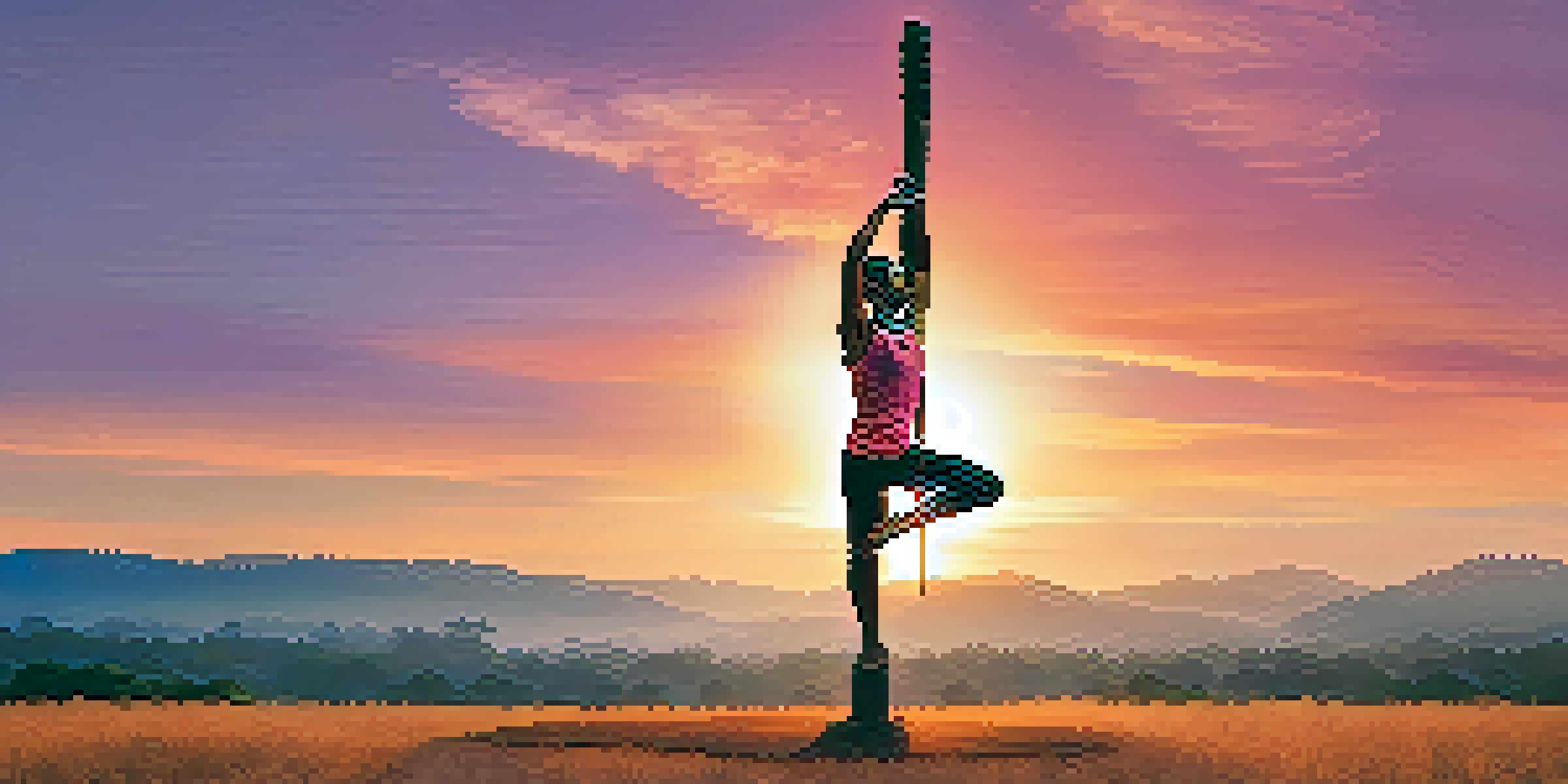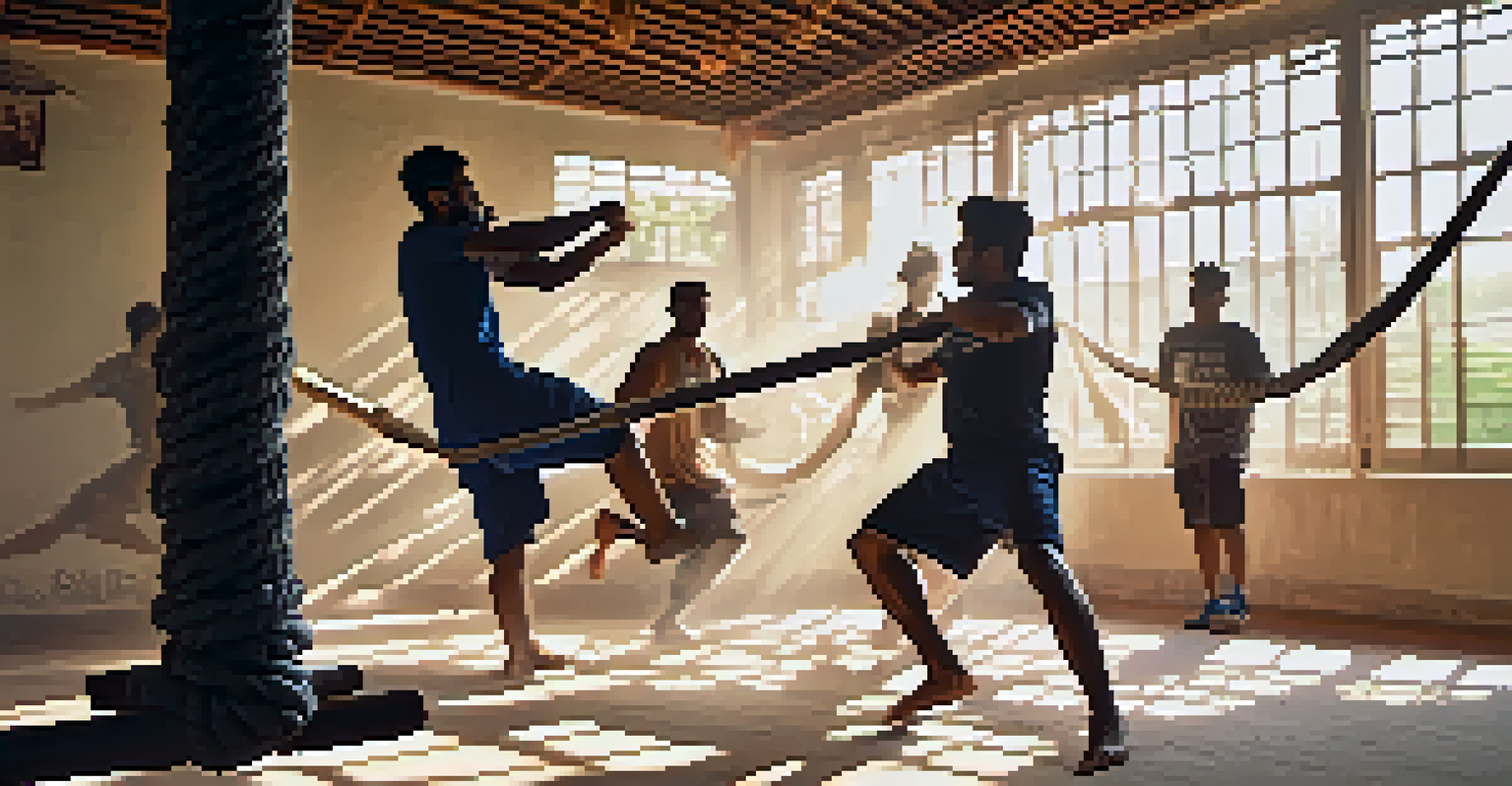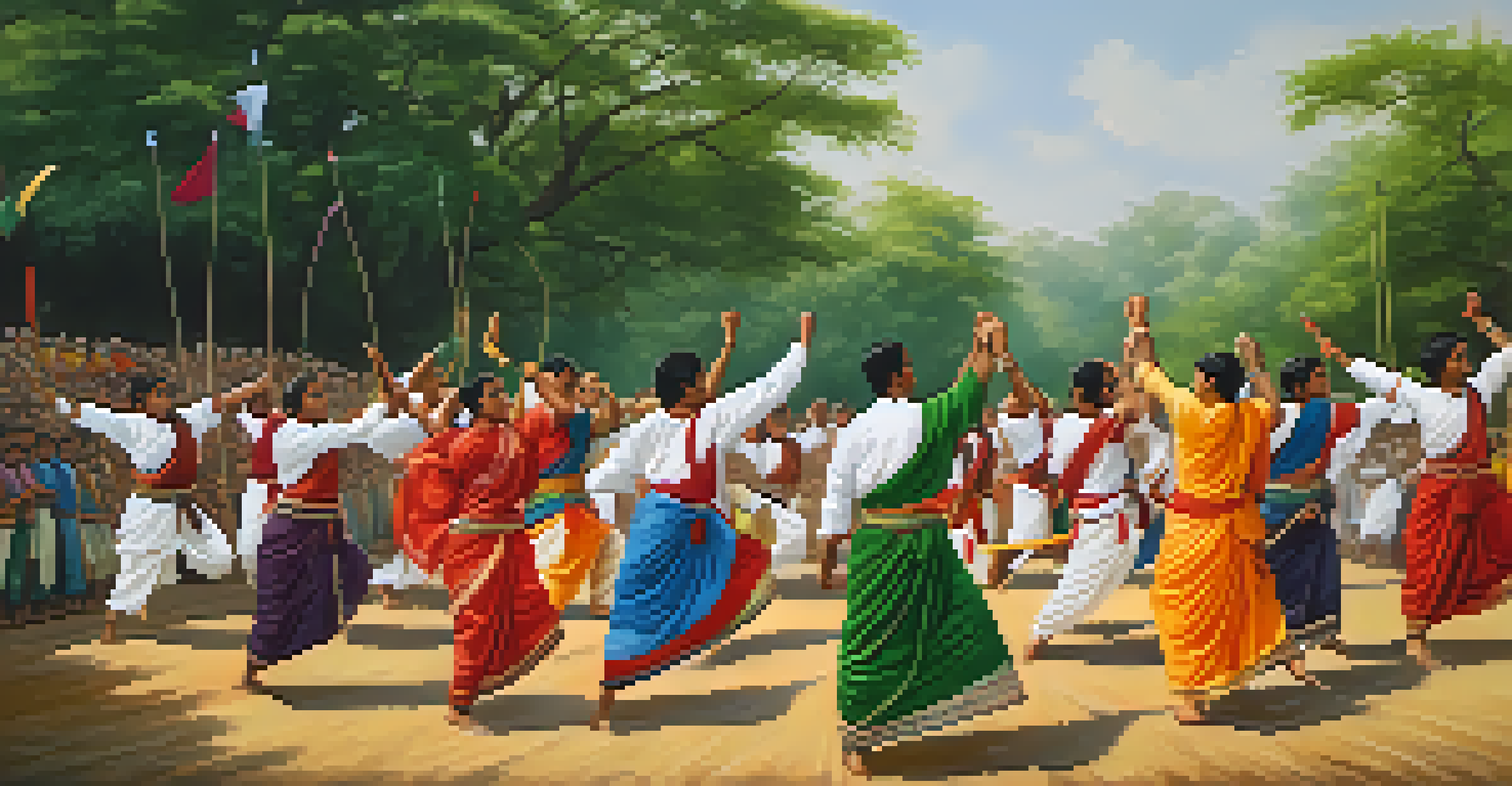The Rich History of Mallakhamb: A Unique Indian Sport

Origins of Mallakhamb: A Deep Dive into Tradition
Mallakhamb, often described as a blend of gymnastics and wrestling, has deep roots in Indian culture. It is believed to have originated in the 12th century in the state of Maharashtra. Initially practiced by warriors as a way to enhance strength and agility, this sport has transformed over the centuries into a captivating display of skill and artistry.
Strength does not come from physical capacity. It comes from an indomitable will.
The term 'Mallakhamb' itself translates to 'pole wrestling,' where athletes perform acrobatic moves on a wooden pole or rope. This unique sport was historically used to train wrestlers and was integrated into traditional Indian martial arts. As time went on, it evolved, finding a place in schools and gyms, attracting enthusiasts from all walks of life.
Today, Mallakhamb is celebrated not just for its physical demands but also for its cultural significance. It embodies the spirit of resilience and dedication, making it a cherished part of India's sporting heritage. Its revival in modern times has paved the way for competitions and a growing community of practitioners.
The Unique Equipment of Mallakhamb: Poles and Ropes
At the heart of Mallakhamb are its unique pieces of equipment: the wooden pole and the hanging rope. These tools are designed specifically to support the intricate movements and poses that athletes perform. The pole, typically around 12 to 15 feet tall, is crafted from seasoned wood, providing both stability and flexibility.

The rope variant, known as 'Hanging Mallakhamb,' adds a dynamic element to the sport. Athletes perform aerial stunts and routines that require immense strength and balance, showcasing their athletic prowess. The choice between the pole and rope allows practitioners to explore different facets of the sport, making it versatile and engaging.
Mallakhamb's Rich Cultural Roots
Originating in the 12th century, Mallakhamb is a unique blend of gymnastics and wrestling that reflects India's cultural heritage.
Both pieces of equipment not only serve functional purposes but also symbolize the tradition and craftsmanship behind Mallakhamb. The skills required to master these tools connect athletes to their cultural roots, fostering a sense of pride and accomplishment as they perform.
Techniques and Skills: The Art of Mallakhamb
Mallakhamb is not just about brute strength; it revolves around a blend of technique, flexibility, and creativity. Athletes practice a variety of poses and transitions, each demanding precision and control. Some popular techniques include the 'Vrikshasana' (Tree Pose) and 'Chakrasana' (Wheel Pose), which require immense balance and core strength.
The greatest glory in living lies not in never falling, but in rising every time we fall.
The training regimen for Mallakhamb practitioners often includes a combination of traditional wrestling techniques and modern gymnastics. This diverse approach helps athletes develop a well-rounded skill set, enabling them to tackle complex routines with confidence. Regular practice not only enhances physical capabilities but also improves focus and mental agility.
Through these techniques, Mallakhamb becomes a form of artistic expression, allowing athletes to showcase their individuality. Each performance tells a story, captivating audiences with the beautiful blend of strength, grace, and fluidity in their movements.
Cultural Significance: Mallakhamb in Indian Society
Mallakhamb holds a special place in Indian culture and tradition, often associated with festivals and spiritual practices. Historically, it has been part of various cultural celebrations, illustrating the importance of physical fitness and mental discipline in Indian society. It serves as a reminder of the values of hard work and perseverance.
In recent years, Mallakhamb has gained recognition beyond its traditional roots, being introduced in schools and fitness centers across the country. This incorporation into modern fitness regimes reflects a growing appreciation for traditional sports and their benefits. By engaging younger generations, it helps preserve this unique art form for future generations.
Health and Fitness Benefits
Practicing Mallakhamb offers a full-body workout that enhances flexibility, strength, and mental well-being.
Moreover, Mallakhamb promotes inclusivity, welcoming participants of all ages and backgrounds. This accessibility enhances community spirit and encourages individuals to connect with their heritage, making the sport not just a physical activity but a cultural experience.
Modern Revival: The Resurgence of Mallakhamb
In recent years, there has been a significant revival of interest in Mallakhamb, both in India and internationally. With the establishment of various organizations and competitions, this ancient sport is being showcased on larger platforms. Events like the National Mallakhamb Championship are helping to elevate its status and attract new enthusiasts.
Social media and digital platforms have also played a pivotal role in promoting Mallakhamb. Athletes share their training routines, techniques, and performances online, inspiring a global audience. This visibility has encouraged people from different countries to explore and practice Mallakhamb, fostering a sense of global community.
The resurgence of Mallakhamb is not just about competition; it represents a reconnection with cultural roots. As more people engage with this sport, it highlights the importance of maintaining traditions in a rapidly changing world, ensuring that the legacy of Mallakhamb continues to thrive.
Health Benefits: Why Practice Mallakhamb?
Beyond its cultural significance, Mallakhamb offers numerous health benefits that appeal to fitness enthusiasts. The sport improves flexibility, strength, and balance, making it an excellent full-body workout. Regular practice helps develop core muscles and enhances overall physical fitness, contributing to a healthier lifestyle.
Moreover, Mallakhamb is known for its mental health benefits. The focus required during practice fosters mindfulness and concentration, allowing individuals to relieve stress and anxiety. As practitioners immerse themselves in the movements, they experience a sense of peace and accomplishment, which can be incredibly therapeutic.
Global Popularity and Recognition
Mallakhamb is gaining international attention through workshops and exhibitions, fostering cross-cultural connections and celebrating its rich heritage.
Incorporating Mallakhamb into one’s fitness routine can lead to long-term wellness benefits. Whether you're looking to build strength, improve flexibility, or simply try something new, this unique sport has something to offer everyone, making it an excellent addition to any lifestyle.
Global Recognition: Mallakhamb Beyond Borders
As Mallakhamb gains popularity, it is receiving recognition on international stages. Various workshops and exhibitions are being organized in countries like the USA, Canada, and Australia, where enthusiasts can learn and practice this unique sport. These events not only spread awareness but also celebrate the rich Indian heritage associated with Mallakhamb.
The sport's unique combination of athleticism and artistry appeals to diverse audiences, drawing in both athletes and spectators alike. As more people experience Mallakhamb, it fosters cross-cultural connections, highlighting the beauty of traditional sports in a globalized world.

This global outreach not only honors the origins of Mallakhamb but also creates opportunities for cultural exchange. As practitioners share their experiences and techniques, they build a community that transcends borders, showcasing the universal values of dedication and discipline inherent in this remarkable sport.